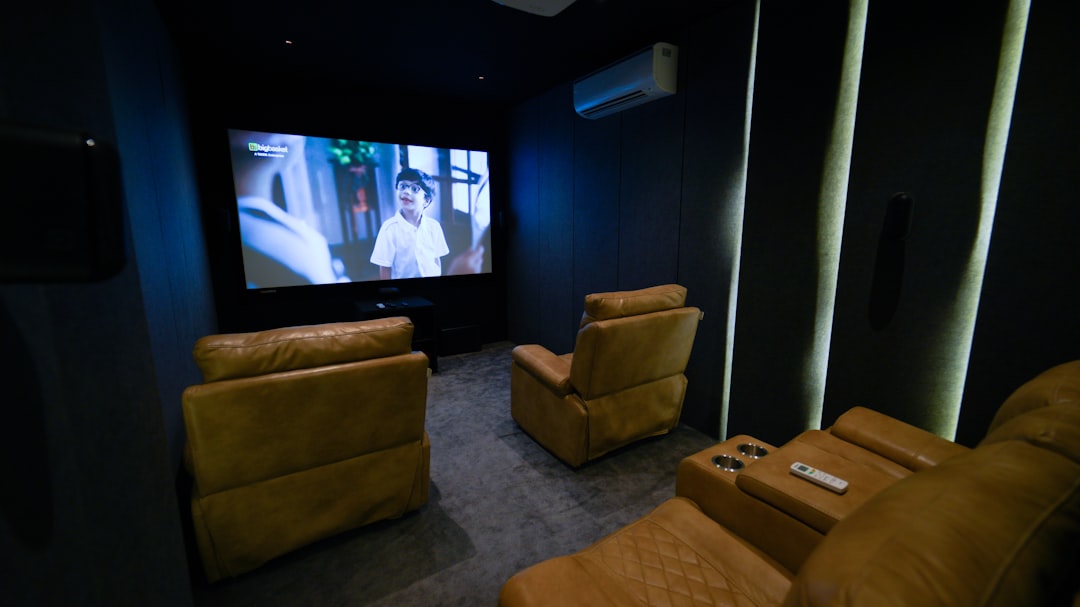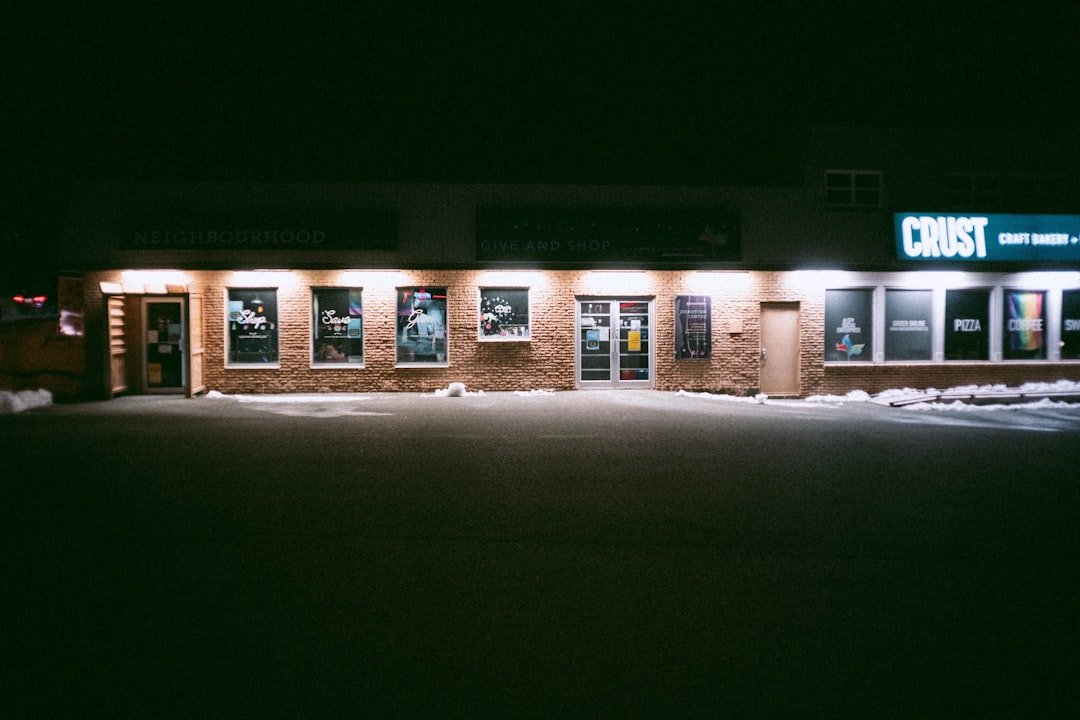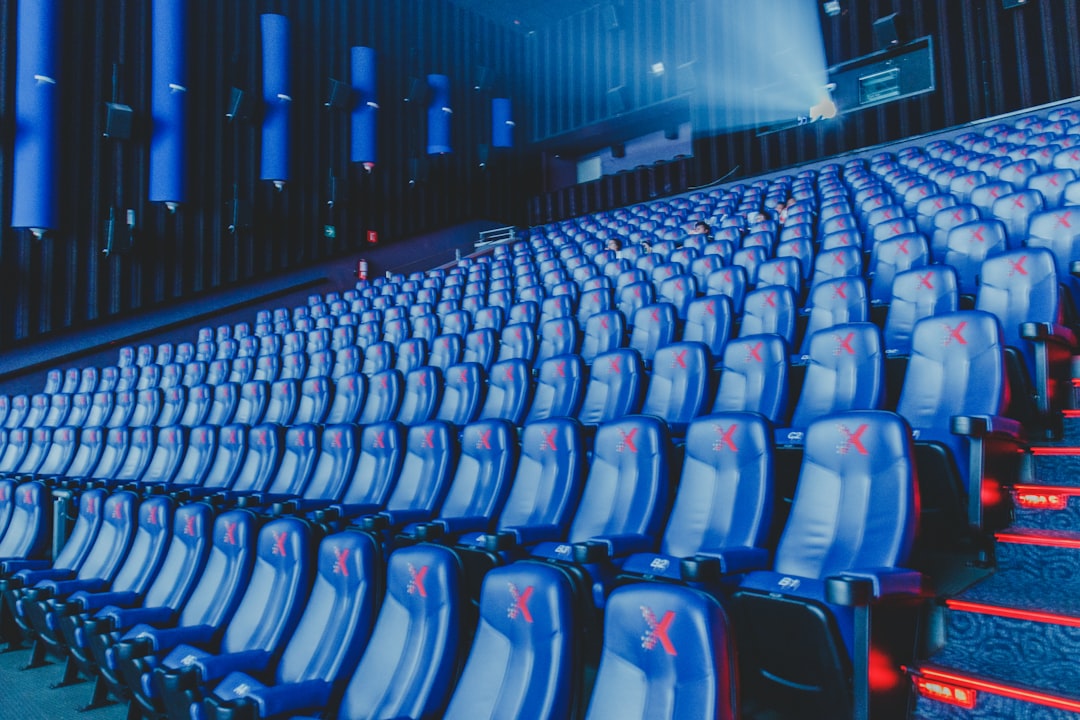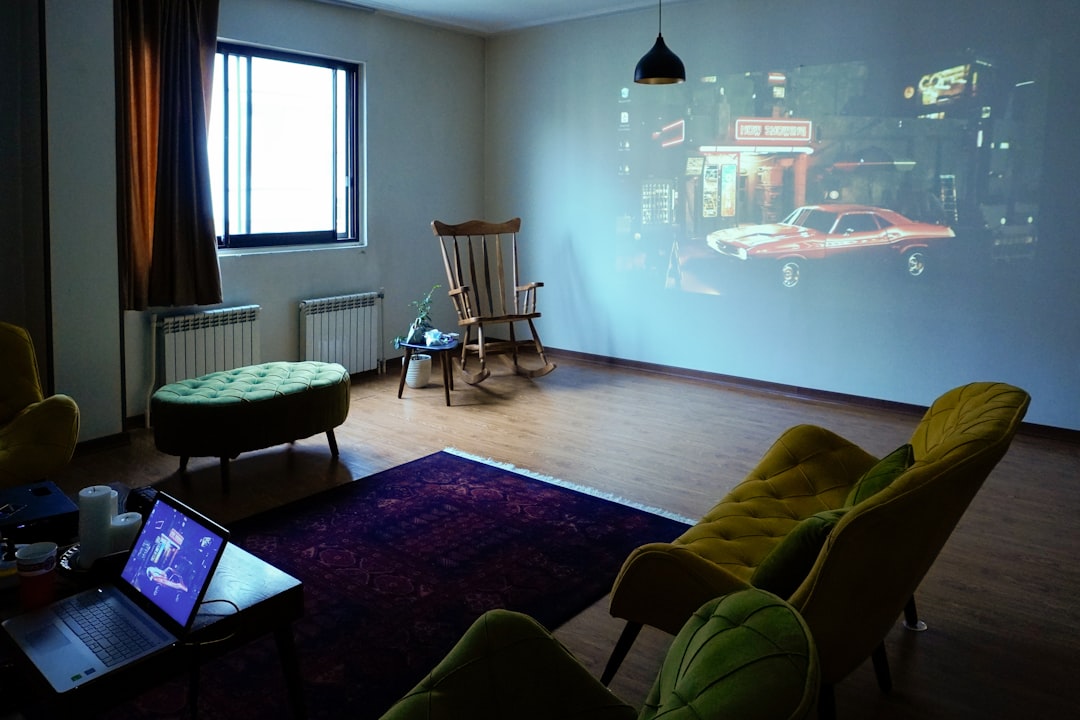

Engage prospects with a scan and streamline customer engagement with FREE QR code marketing tools by Sona – no strings attached!
Create a Free QR CodeFree consultation

No commitment

Engage prospects with a scan and streamline customer engagement with FREE QR code marketing tools by Sona – no strings attached!
Create a Free QR CodeFree consultation

No commitment
In today’s rapidly advancing smart home landscape, home theater system installers face a new set of expectations. Clients want custom entertainment environments that blend cinema-grade visuals, immersive audio, lighting, automation, and seamless control across rooms and devices. The result is a surge in bespoke AV integrations, broader hardware portfolios, and complex commissioning steps that must be verified and documented for compliance, warranty eligibility, and client satisfaction.
Manual workflows struggle to keep up. Scattered spreadsheets, paper checklists, and disconnected forms create blind spots that slow project completion and introduce risk. Missing or delayed documentation is more than a back-office nuisance. It can weaken warranty protection, reduce upsell opportunities, and erode trust when clients cannot see what was installed and verified. QR code solutions provide a practical way to connect every physical action on-site with a digital record, creating a simple, auditable trail from technician check-in to client sign-off and ongoing support.
Modern QR workflows digitize every critical milestone. Technicians scan at arrival, during system testing, and at handoff; clients scan to register warranties or submit feedback; and managers track everything in a unified dashboard. The result is faster completion, real-time transparency, and a clear foundation for growth.

QR codes connect in-field activities to back-end systems in a single scan, turning compliance from a paper chase into a digital process. For home theater installers, a QR-enabled workflow replaces manual sign-off sheets and disjointed emails with timestamped, location-aware, and technician-identified entries. Each scan advances the job to the next stage and ensures the right forms, procedures, and documentation are completed.
The shift is straightforward. Place scannable QR codes at key moments in the job: arrival, rack build completion, calibration, client training, and final approval. Each code opens the appropriate form or checklist, such as Google Forms QR, captures media like photos or videos, and stores records in a central system. Managers gain real-time visibility, installers save time, and clients benefit from transparent documentation that supports warranties and ongoing service.
Consider a simple example. A QR-based check-in at the job site creates a timestamped record tied to the technician and location. Additional scans unlock the calibration checklist and final sign-off form. Each entry is auto-logged and tied to the client profile. Disputes drop, warranty claims accelerate, and post-install follow-up is more relevant because you know exactly what was completed and when.

Many installation teams still rely on analog processes that break under the pressure of modern smart home expectations. Paper forms get misplaced, emails sit in inboxes, and installation details scatter across tools. That fragmentation directly impacts compliance since incomplete records can cause warranty denials, safety oversights, or slower handovers. QR codes fix this physical-to-digital gap by making every milestone scannable and auditable.
Speed and simplicity also matter. Clients and technicians should not have to download an app or type a long URL just to log a step or access resources. A QR scan is instant. It transports the installer or client to the right content with minimal friction. Dynamic QR codes add flexibility because destinations can be updated if standards change or a checklist needs revision. This avoids reprinting site materials, badges, or wallplates.
Common challenges that QR codes address include:
Practically, QR codes fit right into the materials installers already produce. Add codes to installation stickers behind racks, quick-start guides, welcome kits, invoices, and showroom placards. Each placement drives a measurable action: starting a checklist, viewing a tutorial, registering a warranty, or booking a service plan. The result is lower friction for clients, better compliance for teams, and reliable data for the business.

Installers have multiple QR formats at their disposal, and each supports a specific job-to-digital action. The goal is to match the format to the outcome you want at that moment in the workflow.
Dynamic QR codes are especially valuable in compliance and service. If a process changes or a manufacturer updates a form, you can update the destination without reprinting. That flexibility safeguards your investment in printed materials like technician badges, jobsite signage, and client welcome folders. With a platform like Sona QR, you can generate, manage, and track all of these formats in one place, keeping every code up to date and every scan attributable.
QR codes do their best work where offline interaction meets an immediate need for digital action. For home theater installers, that means targeting the exact moments when technicians and clients need clear next steps.
Place codes on technician job tickets and ID badges to automate arrival logs and compliance milestones. Add them to equipment packaging and system guides so clients can open warranty registration or feature tips immediately. After installation, use QR codes in welcome kits and on in-home signage to prompt reviews, schedule maintenance, or explore upgrades like acoustic treatments or streaming service bundles.
These placements do more than increase scan rates. They reduce workflow friction, improve compliance through guided steps, and create measurable touchpoints that contribute to long-term growth.

Digitizing manual steps with QR codes delivers time-stamped, technician-attributed records across the entire project lifecycle. The value is immediate: fewer errors, faster handoffs, and clear accountability backed by data. Below are three high-impact use cases tailored to home theater installation.
Technician check-in is the first critical milestone. Placing a code on the job ticket or a site sign lets technicians scan on arrival, automatically logging identity, time, and location. The same code can reveal stage-specific checklists and safety protocols, ensuring the right steps are taken in the right order. Managers can see who is on site and which milestones have been completed without a phone call.
System walkthrough and client sign-off are equally important. A QR code presented during the final demonstration opens a digital form that both the installer and client complete together. Features are verified, photographs of equipment placement and wire management are attached, and legal acknowledgments are captured. The form sends a copy to the client and stores the record in your CRM, creating a reliable baseline for future support.
When these touchpoints are digitized, data reliability increases and errors become visible. Teams can spot patterns like repeat issues with a specific device or recurring missed steps in calibration. That insight fuels better training, stronger vendor partnerships, and targeted upsells that serve the client’s needs.
Every scan is a signal that carries intent, context, and timing. Home theater installers can transform those signals into meaningful audience segments for retargeting across email, SMS, and paid media. When each QR code is tied to a specific job, technician, or marketing asset, you can see the entire path from first interest to signed proposal to ongoing service.
Begin by creating unique QR codes for each stage of the buyer journey. Use one set for awareness materials like showroom posters or neighborhood mailers, another for consideration items like product brochures, and a third for conversion assets such as pricing sheets or demo bookings. Each scan builds a segmented list matched to funnel stage, which enables more relevant nurturing.
Next, tag audiences based on use case. For example, clients who scan to explore projectors and screens belong in a different segment than those who scan for whole-home audio or automation. Similarly, a builder or interior designer scanning a trade program code needs a partner-focused sequence rather than a residential buyer’s content. These distinctions make your follow-up more impactful and respectful of each stakeholder’s goals.
You can also segment by location and timing. Scans from showroom TVs on weekends may reflect family entertainment research, while scans from event booths at a home show often signal near-term buying intent. This context helps you prioritize sales outreach and tailor creative. With Sona QR, scan data can sync directly to your CRM and ad platforms so these segments become live audiences for email nurture, SMS reminders, and custom ad campaigns.
Finally, connect the dots across channels. When someone scans to book a consultation, visits your website to view a gallery, and later scans a direct mail piece to claim a seasonal upgrade offer, you can track that progression. Using Sona.com for attribution, you can link anonymous scans to known contacts and measure how each QR touchpoint contributed to pipeline and revenue. This puts precision behind your retargeting strategy and keeps your marketing investments accountable.
QR codes are the connective tissue between physical experiences and digital outcomes. In home theater, showroom interactions, demos, and printed collateral are often the first touch. Codes turn that attention into measurable action, enabling lead capture, scheduling, and education in real time.
Brochures and print collateral can include QR codes that drive people to curated landing pages, configuration guides, or appointment scheduling. Each scan reveals which products or packages attract the most interest and which distribution points are performing. That feedback helps optimize messaging and inventory priorities.
Social media and events benefit from QR-enabled engagement loops. Use codes on event signage, demonstration placards, and branded merchandise to trigger sweepstakes entries, tutorial access, AR previews of room acoustics, or QR sound boxes experiences. These interactions are tagged by event or channel, giving you a clearer picture of who engages and how.
Direct mail becomes measurable with QR-linked offers. Send neighborhood-specific mailers that link to a personalized quote flow or a cinematic room inspiration gallery. You will know which routes scanned, when they scanned, and what they did next.
Showroom and video ads can include on-screen QR codes so viewers can book demos, download a buying guide, or start a financing application, or enable QR payments. This reduces friction and captures demand at the moment of excitement. The same approach works for in-store digital signage, where codes guide shoppers to the right control app or a live chat with a consultant.
Conference and trade show strategies also improve with QR codes. Add them to booth signage, name badges, or collateral for instant lead capture and qualification. Each scan is tagged by location, time, and asset, which makes follow-up more targeted. With a centralized platform like Sona QR, you can manage codes, monitor performance across channels, and sync scan activity to your CRM to keep the journey cohesive.
A successful QR initiative follows a straightforward sequence: define the outcome, match the code to the job, design for scannability, deploy where it matters, and optimize quickly. The steps below translate that sequence into a practical checklist for home theater teams.
Start by clarifying the primary outcome you need. For compliance, you might focus on technician check-in and milestone checklists. For growth, you might target review generation or upgrade bookings. A single campaign can include multiple codes if each one supports a distinct action within the journey.
Tailor goals to the context. For example, a home and garden show might use a lead capture code for demo bookings, while a post-install welcome kit might use a warranty registration code paired with a review prompt. Define success metrics for each, such as percentage of on-time check-ins, number of completed sign-offs, or conversion rate from scans to booked consultations.
Static codes point to a fixed destination and are useful for evergreen resources like a general support page or a PDF guide. Dynamic codes are trackable and editable, which makes them ideal for compliance, marketing optimization, and any use case that benefits from changing destinations or A/B testing.
For most installer workflows, dynamic codes are the right choice because they support analytics, retargeting, and long-term flexibility. If a manufacturer updates a form or you want to rotate a special promotion, you can adjust without reprinting. Platforms like Sona QR centralize code management so edits propagate instantly while data remains intact.
Design impacts scan rates as much as placement. Use high contrast, sufficient size relative to viewing distance, and a clear visual frame that draws the eye. Include benefit-driven calls to action that set expectations, such as Scan to start checklist, Scan for warranty, or Scan to book a demo. For inspiration on creative framing, see QR in advertising.
Test before deployment. Validate scannability on multiple devices and operating systems, at various angles and distances, and under different lighting conditions that mimic jobsites and showrooms. Confirm that the destination loads fast and is optimized for mobile. Include your logo and brand colors sparingly so the code remains readable.
Match placement to behavior. On-site compliance codes belong on job tickets, technician badges, and temporary site signage. Client-facing codes belong on quick-start cards, remote control holders, inside cabinet doors, and invoices. Marketing codes fit brochures, direct mailers, showroom displays, video ads, and event kits.
Prioritize clarity and convenience. Place codes at eye level in showrooms, near decision points in the shopping journey, and at natural stopping points during installation walkthroughs. Avoid reflective surfaces and poor lighting. If a code must live in a challenging spot, add a redundant code in a better location to reduce friction.
Treat each code like a mini campaign. Use Sona QR to track scans by time, location, device, and source asset. Monitor conversion behavior, identify drop-off points, and watch for anomalies like repeated failed scans or low completion rates on a specific checklist.
Iterate fast. A/B test landing pages, calls to action, and creative framing around the code. If one showroom display outperforms another, analyze signage, lighting, and message. If a compliance code is underused, refresh technician training and consider adding a second code at a more prominent location. Use your insights to refine both operations and marketing.
QR analytics turn offline actions into measurable data. For home theater teams, this means you can attribute revenue to specific events such as a showroom scan that led to a booked consultation, or a welcome kit scan that prompted an upgrade. Without this visibility, you are guessing which materials and moments are driving outcomes. Learn why precise revenue attribution matters.
The goal is not only to count scans but to connect them to the customer journey. Did the scan lead to a form fill, a scheduled site visit, or a signed proposal? Which channels produce the most high-intent interactions? Traditional tools often stop at the scan. Using Sona QR and Sona.com, you can go further and map scans to pipeline, identity, and revenue.
With this level of visibility, you can justify spend, prioritize high-performing channels, and make QR an integral part of your performance marketing and compliance strategy.
A few best practices will compound the value of your QR initiatives. Treat codes as part of an orchestrated system rather than one-off experiments. Focus on scannability, clear calls to action, and automation that helps the next step happen without manual effort.
Educate both installers and clients about the benefit of scanning. When technicians understand that scans speed up approvals and reduce callbacks, adoption rises. When clients see that scans unlock quick support, personalized tips, and upgrade opportunities, participation increases and satisfaction grows.
Creative deployment examples include a QR on invoices that offers a discounted calibration tune-up before the holidays, and a QR on a remote cradle that opens a troubleshooting flow with embedded videos. Each of these placements turns a common touchpoint into a measurable action with clear customer value.

Leading installers use QR codes to tighten operations and amplify marketing impact. The most successful programs start with a compliance backbone, then expand into customer experience and growth.
A regional home theater firm reduced compliance errors by digitizing jobsite records. Each technician scanned a code on arrival, unlocking stage-specific tasks like rack inspection, cable labeling, and audio calibration. Completion rates improved, and managers could identify repeated hurdles by device type. This led to targeted supplier training and a noticeable drop in callbacks.
Another team embedded QR-enabled wallplates in equipment closets. Scans revealed wiring diagrams, linked control app downloads, and opened a priority support form. Clients appreciated the clear path to help, while the installer captured device details and issue context automatically, speeding resolution times. The same plates included a discreet referral QR that credited the client for new business they referred.
These examples underscore a consistent lesson. When QR codes are woven into every touchpoint, they deliver operational rigor and marketing momentum that compounds over time.
QR programs shine when they are simple to follow and easy to scan. Dynamic codes are your friend because they provide flexibility, analytics, and long-term durability without reprints. Place codes where the lighting is good and the viewing distance makes sense. Pilot in a single showroom or job crew, refine based on feedback, then scale.
Training is non-negotiable. Teach technicians to introduce digital checklists as a quality assurance benefit, not a burden. Coach them to position the value for clients: faster support, clear documentation, and easy access to resources. Reinforce adoption with dashboards that show completion rates and celebrate wins.
QR codes have evolved into a strategic asset for home theater system installers. They resolve fragmented documentation, tighten compliance, and reveal customer insights that lead to better service and higher revenue. With Sona QR handling generation, management, and tracking, and Sona.com connecting scans to attribution and revenue, you can turn every surface into a digital entry point and every moment of interest into a measurable action. Start creating QR codes for free.
QR codes have transformed the home theater system installers industry from traditional compliance checks into seamless, verifiable processes that enhance both efficiency and trust. By integrating QR codes, installers can not only ensure compliance with safety standards but also offer clients a transparent, interactive experience that builds confidence and satisfaction. Imagine instantly verifying installation credentials or warranty details with a simple scan—streamlining service calls and boosting customer loyalty.
With Sona QR, you gain the power to create dynamic, trackable QR codes that update instantly without the need for reprinting, linking every scan to compliance records and customer interactions. This means fewer errors, faster audits, and clearer communication that turns regulatory requirements into competitive advantages.
Start for free with Sona QR today and transform compliance from a hurdle into a high-value opportunity that drives customer trust and business growth.
Professional installers create custom entertainment environments with cinema-grade visuals, immersive audio, lighting, automation, and seamless control, ensuring compliance, warranty eligibility, and client satisfaction.
QR codes digitize compliance and documentation by linking physical actions to digital records, enabling real-time tracking, faster completion, warranty registration, client feedback, and seamless follow-up.
Look for installers who use digital workflows such as QR code systems to ensure stage-based compliance, clear documentation, real-time project visibility, and integration with service and CRM tools.
Choose installers who offer transparent, auditable workflows with digital compliance tracking, use modern tools like QR codes for project milestones, and provide clear post-install support and warranty registration.
QR codes help prevent lost warranty registrations, close compliance blind spots, accelerate client reviews and referrals, and reduce errors caused by manual paperwork and fragmented communication.
QR codes can be placed on job tickets, technician badges, equipment packaging, system guides, client welcome kits, invoices, showroom displays, and in-home signage to streamline workflows and client engagement.
Useful QR code formats include web links for checklists and tutorials, vCards for contact sharing, forms for feedback and warranty registration, Wi-Fi access codes, and app download links.
The article does not specify the cost of installing a home theater system.
Installers can track scan data by time, location, and source, measure engagement across channels, sync data with CRM, attribute revenue to QR touchpoints, and optimize campaigns through A/B testing and real-time adjustments.
Best practices include using dynamic QR codes, placing them in well-lit, accessible locations, assigning unique codes per workflow stage, educating installers and clients on their benefits, and automating follow-up communications.
Use Sona QR's trackable codes to improve customer acquisition and engagement today.
Create Your FREE Trackable QR Code in SecondsJoin results-focused teams combining Sona Platform automation with advanced Google Ads strategies to scale lead generation

Connect your existing CRM

Free Account Enrichment

No setup fees
No commitment required

Free consultation

Get a custom Google Ads roadmap for your business






Launch campaigns that generate qualified leads in 30 days or less.
